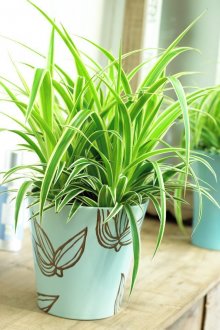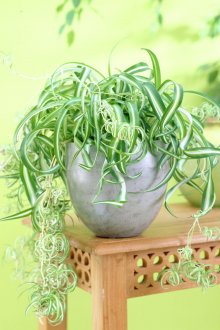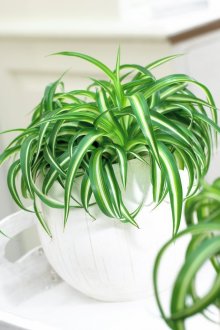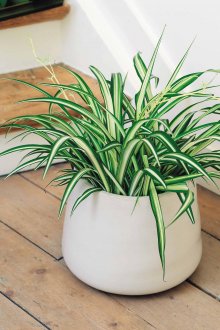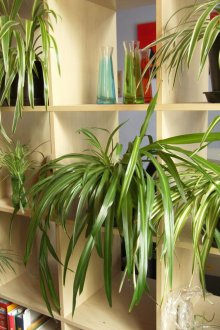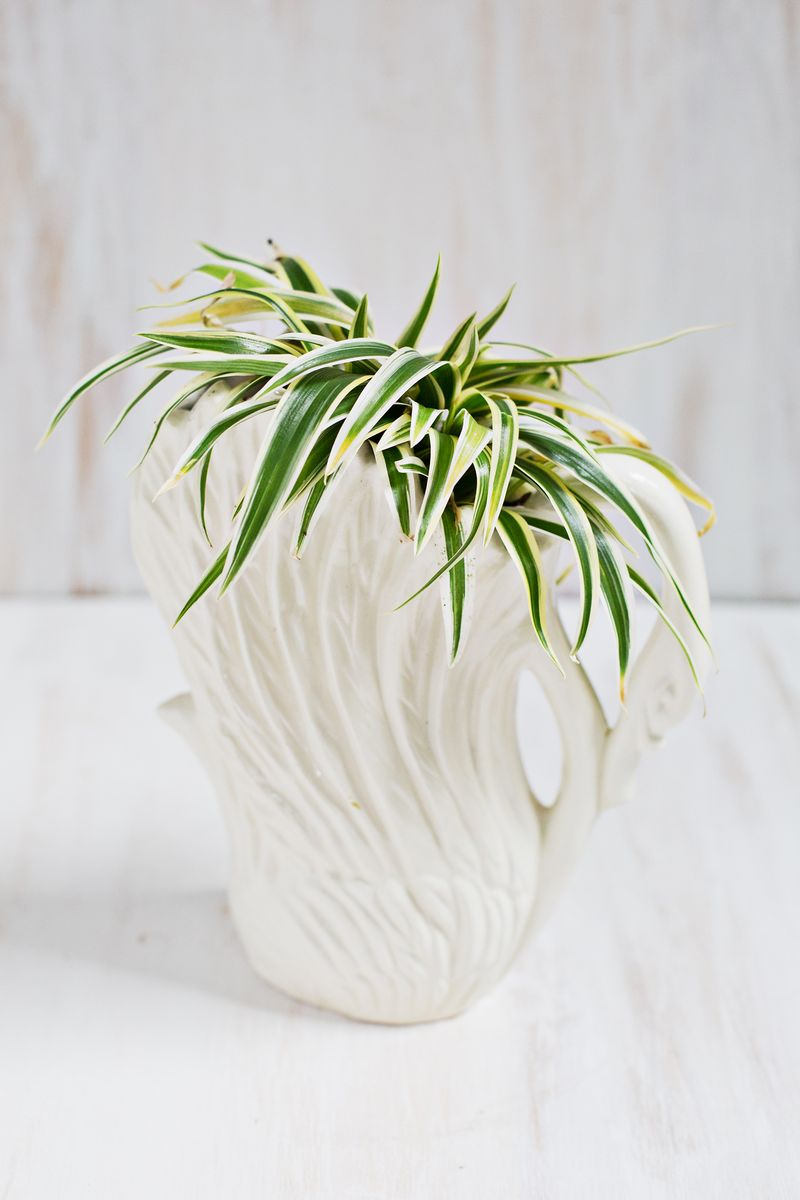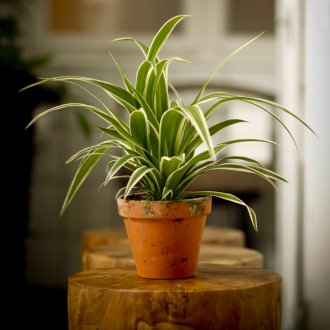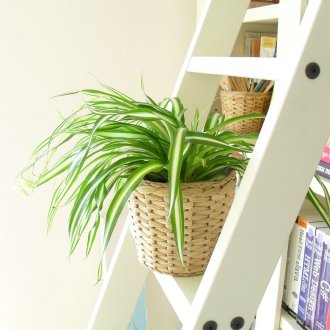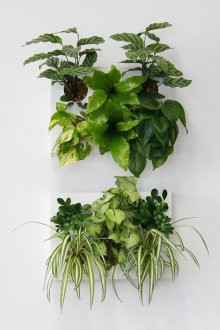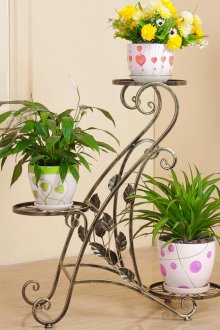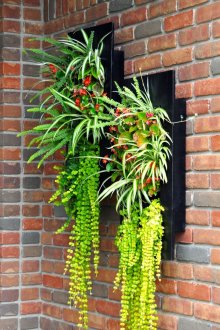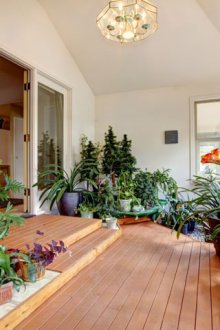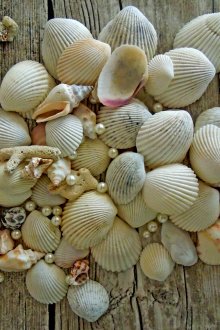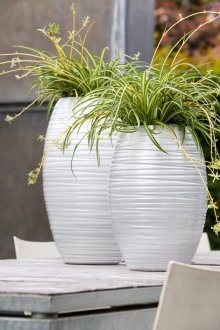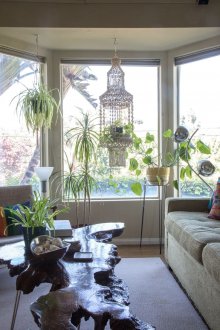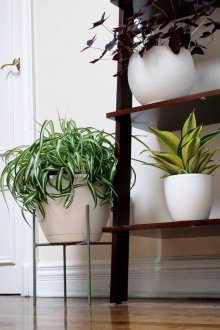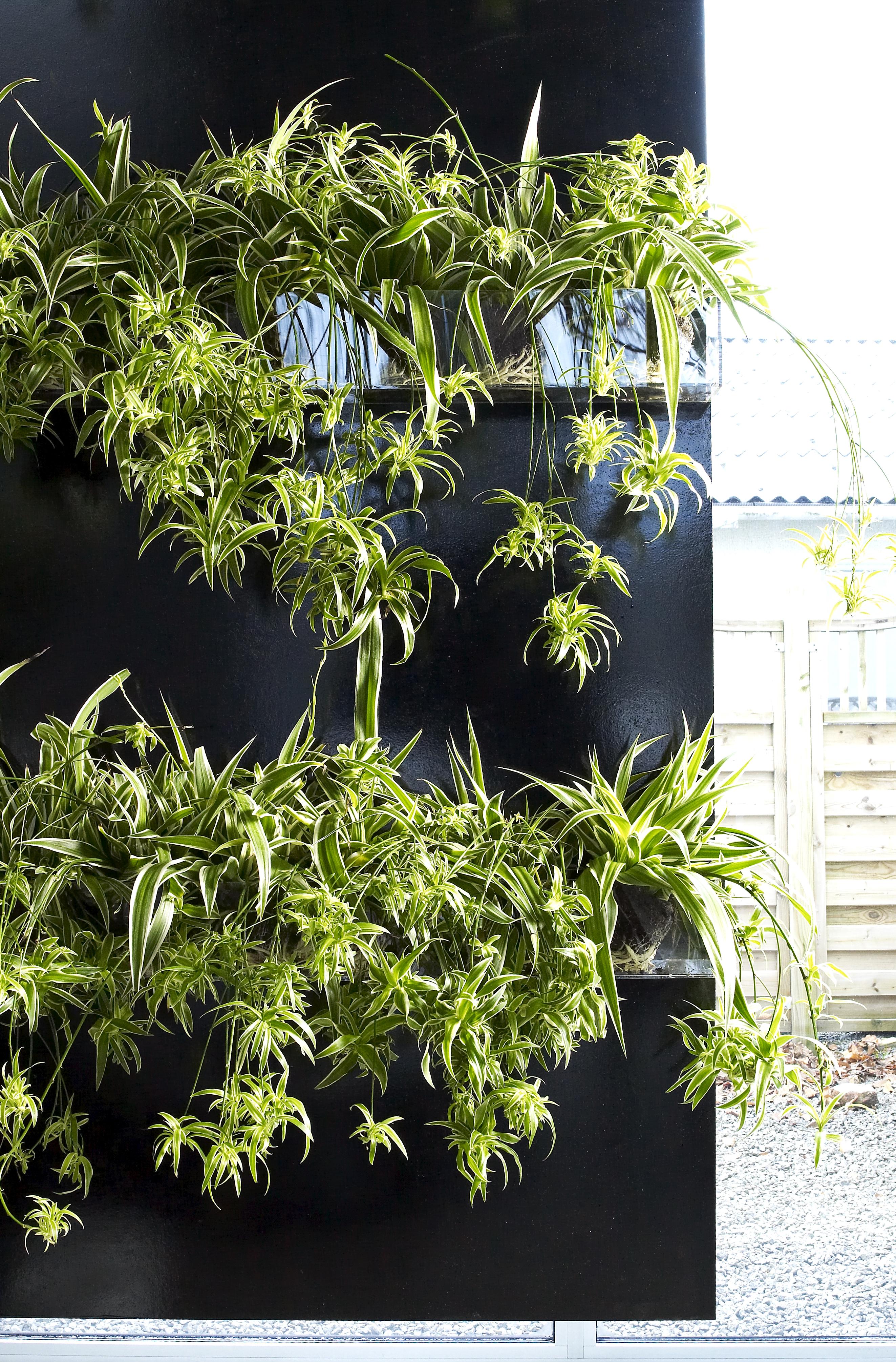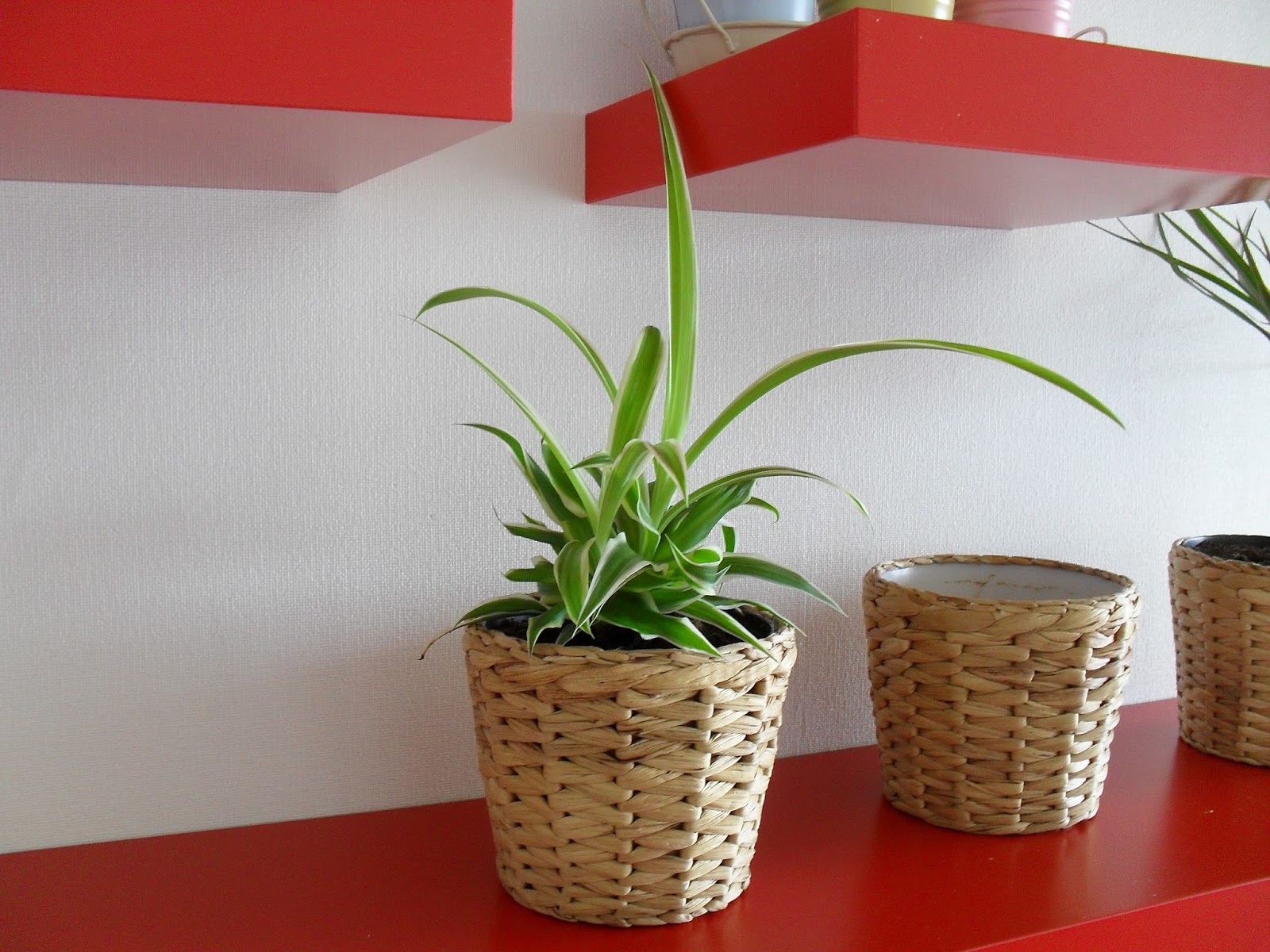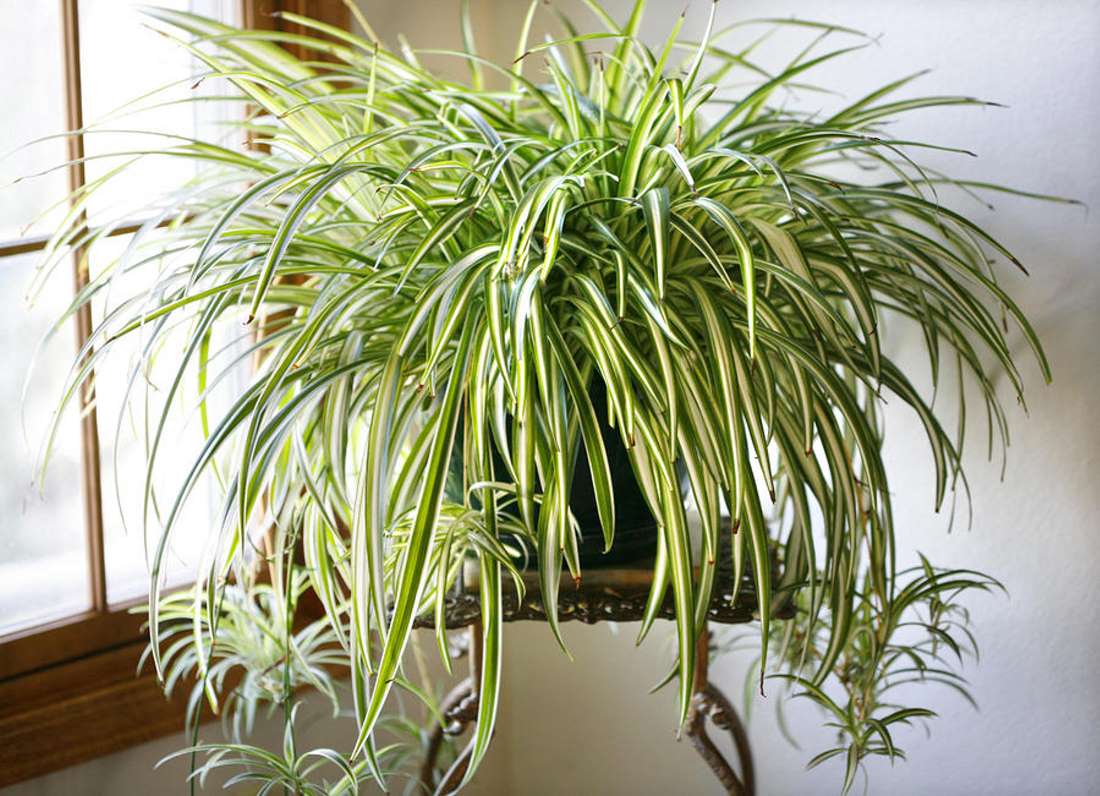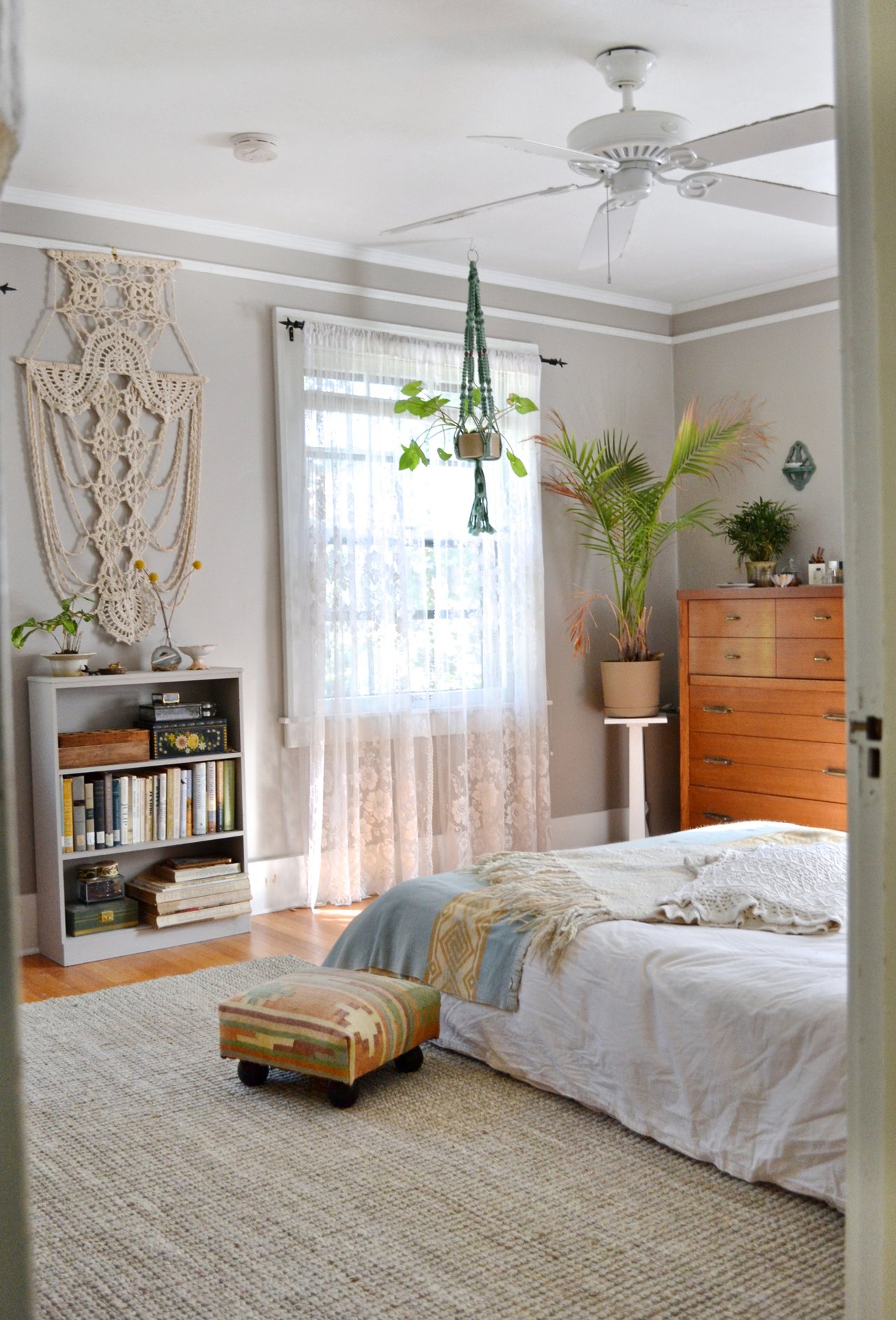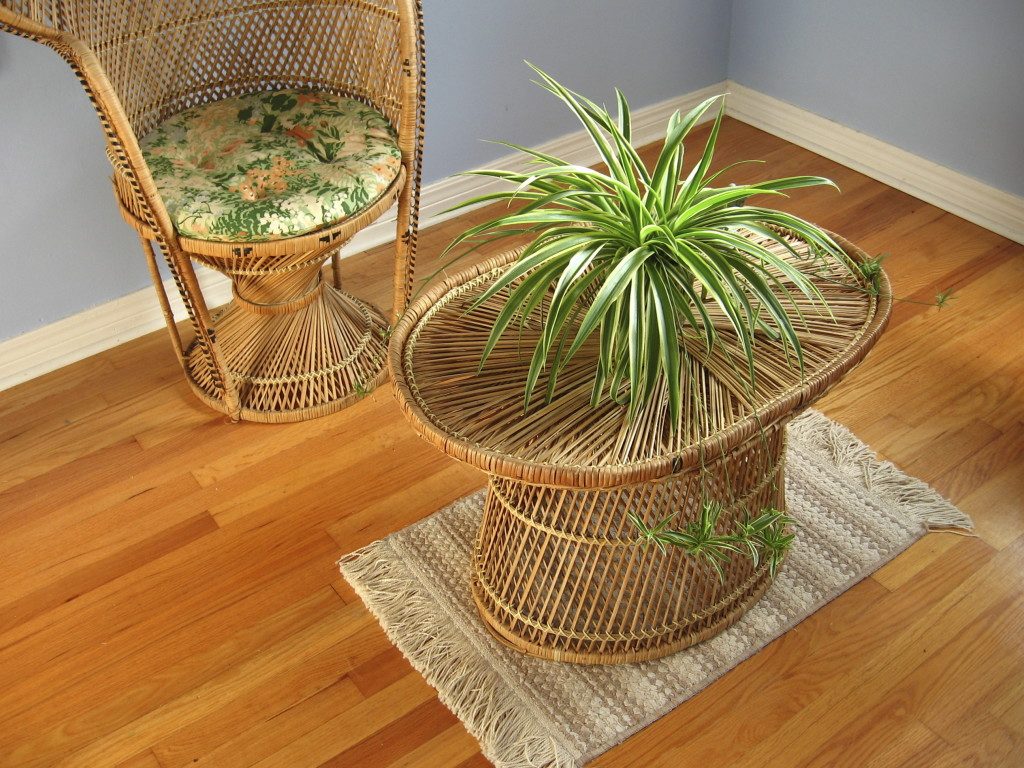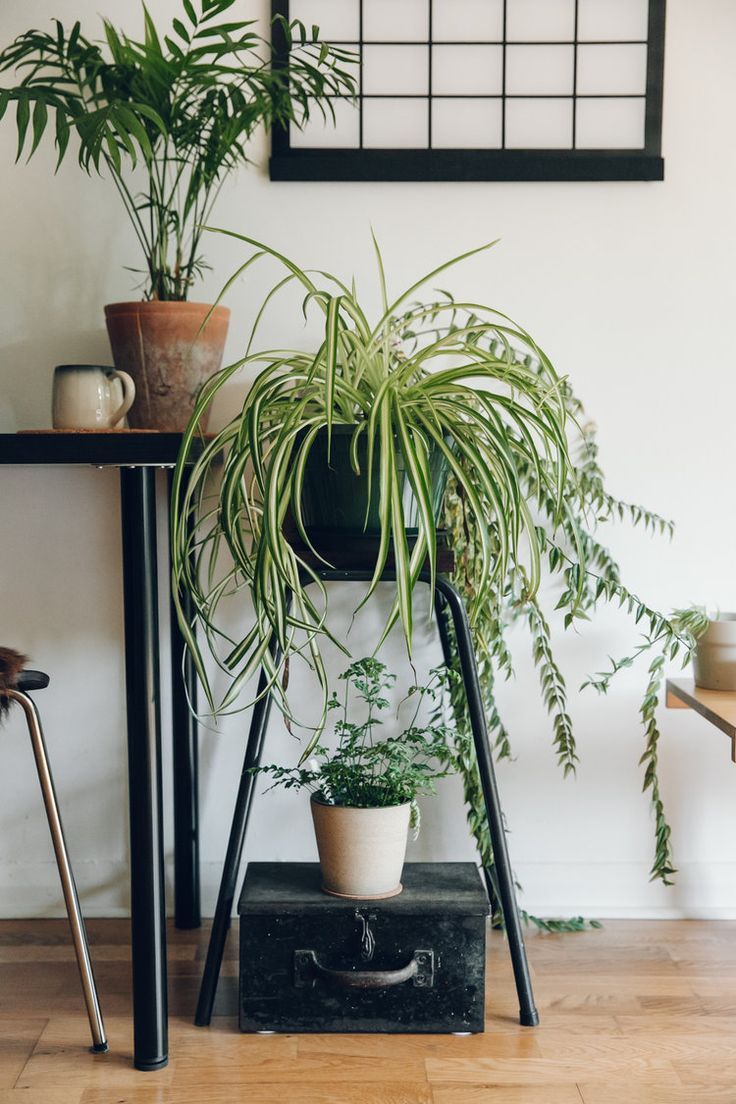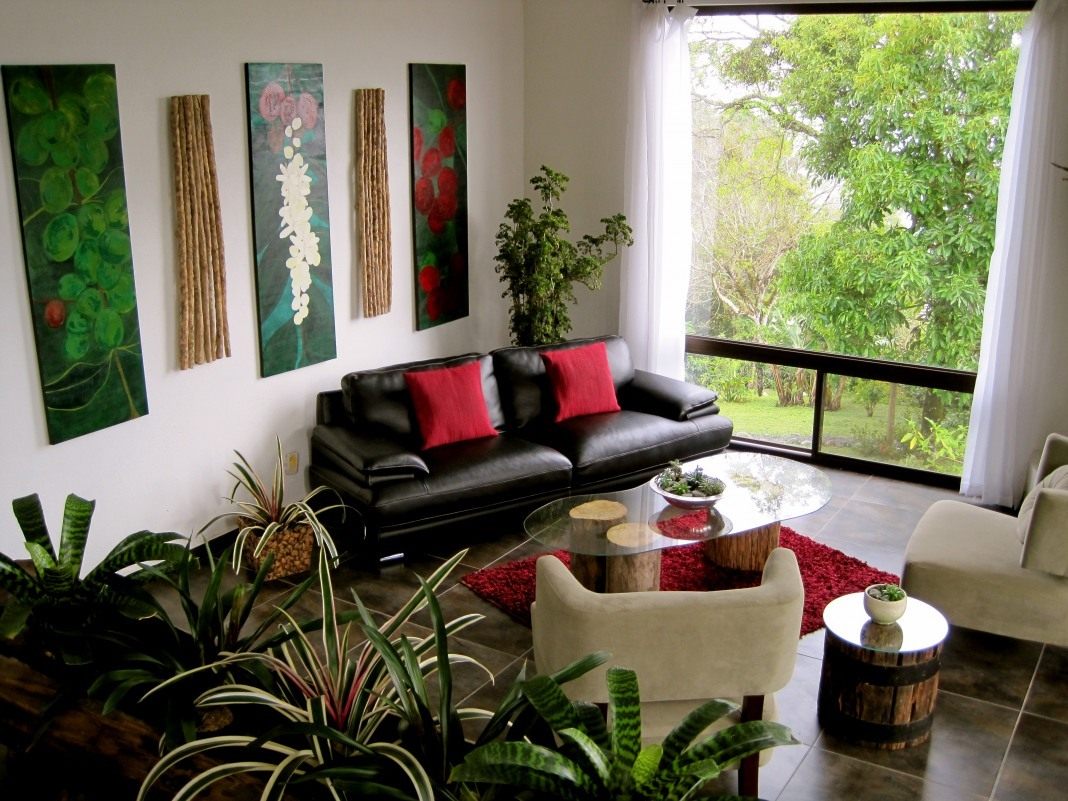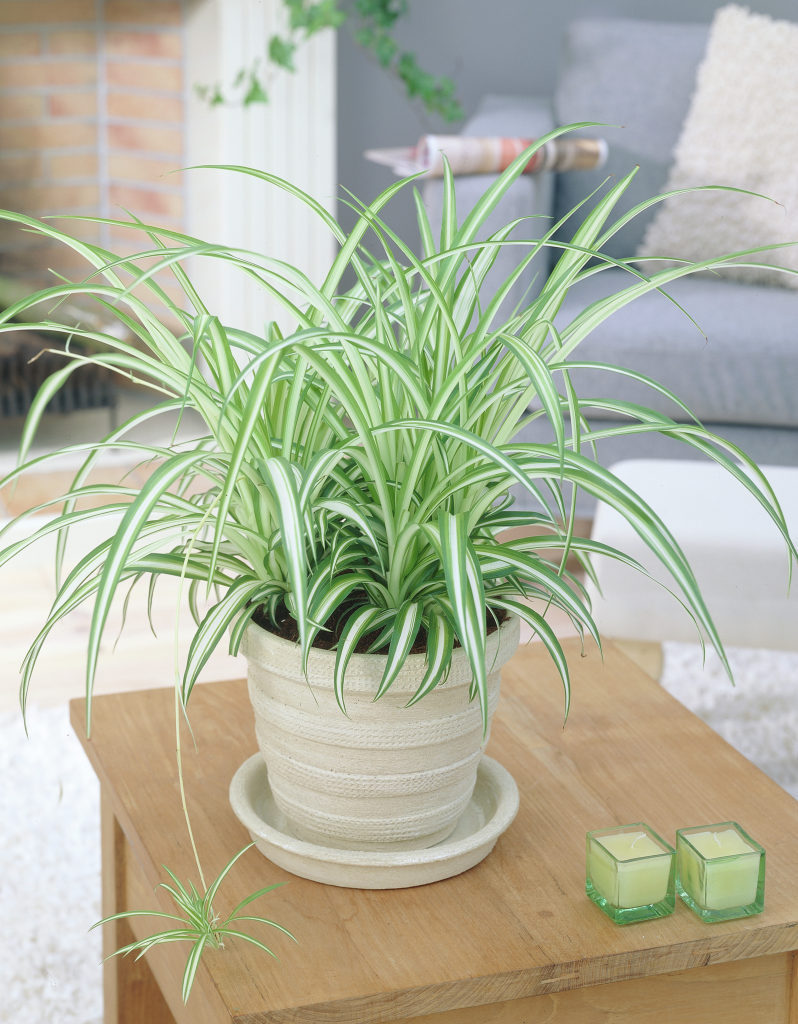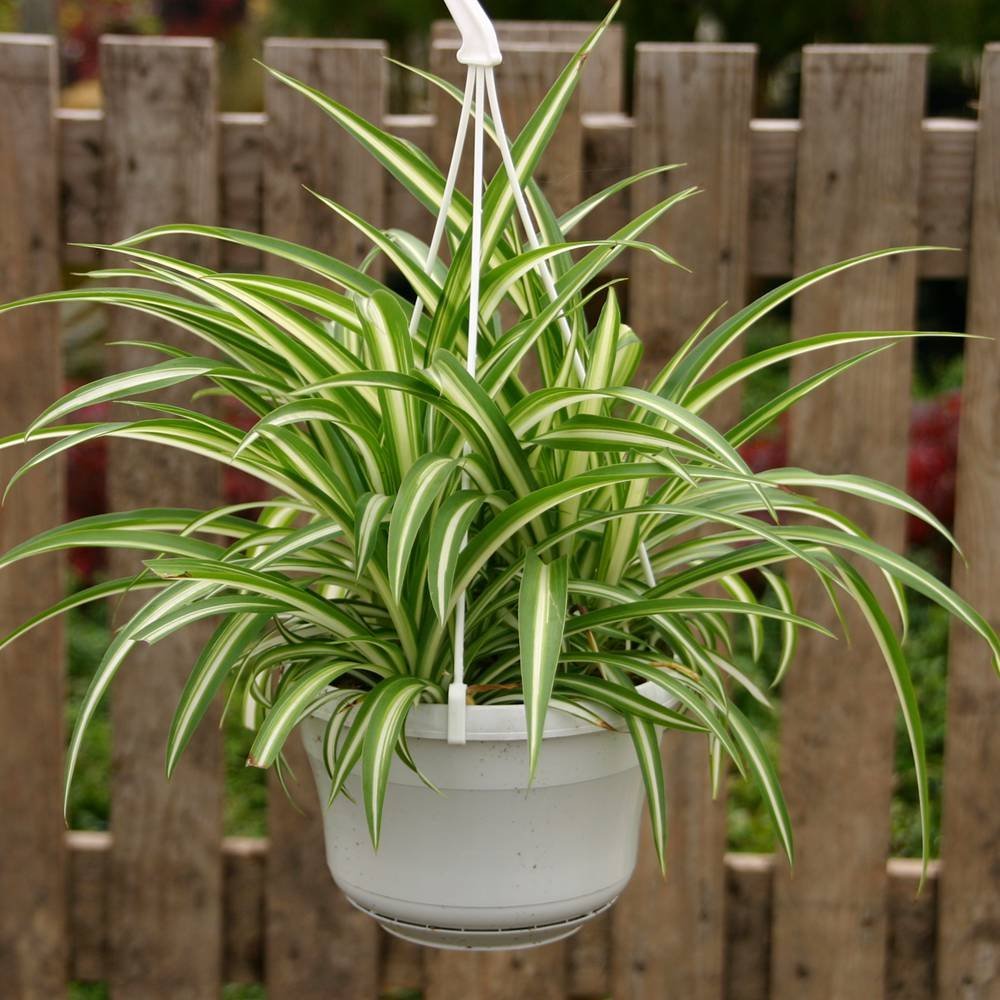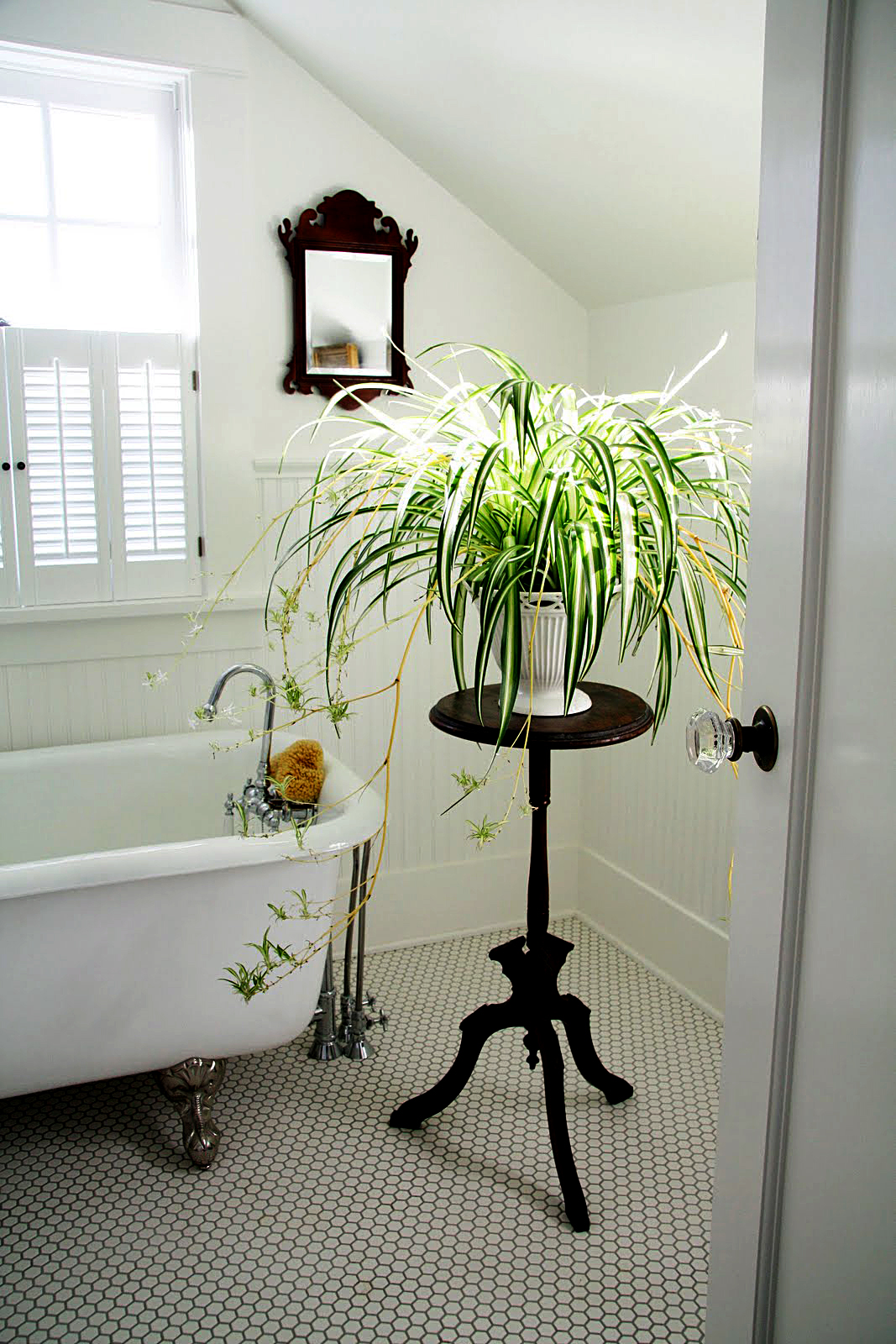Chlorophytum - a bright plant that creates coziness (31 photos)
Content
In almost every house you can find a bright and pleasing to the eye abundant green plant - chlorophytum. And this is not surprising, because this is one of the most unpretentious indoor plants: chlorophytum easily survives periods of drought and abundant watering, excess or lack of sunlight. This unpretentiousness makes home chlorophytum an ideal plant for beginners or forgetful gardeners.
Description
The plant chlorophytum is very cheerful and pleasant to the eye. As a rule, this is a small bush of long green leaves, sometimes decorated with white stripes. During flowering, he shoots long arrows, on which small white flowers blossom and “children” are formed - small bushes of new plants. Another type of chlorophytum with wide lanceolate leaves is also becoming popular.
Due to the long hanging leaves, chlorophytum can be grown as an ampel plant.
This plant will be an excellent decoration of flower stands or slides, it will look good on a cabinet or shelf. It can also be hung on the wall or in the window opening.
Chlorophytum comes from the warm and humid tropical regions of America and Africa, so it can adapt perfectly to excess moisture or difficult conditions. With age, a chlorophytum indoor plant can reach 50 cm in diameter and about the same height. Arrows with flowers and young shoots can reach 80-100 cm in length. Under favorable conditions, chlorophytum can live for more than 10 years.
Kinds
In nature, there are more than 200 species and varieties of chlorophytum. Home varieties, of course, are much smaller. The most popular among gardeners is the crested chlorophytum (Chlorophytum comosum) and its various varieties:
- green leaf;
- variegated, with a white stripe in the center (Chlorophytum comosum Vitatum);
- variegated, with stripes along the edges of the leaf (Chlorophytum comosum Variegatum);
- curly (Chlorophytum comosum bonnie).
This species is familiar to everyone from the school bench - it is they who prefer to plant it in school offices and corridors. A distinctive feature of this species are long arrows with flowers and "kids."
Cape chlorophytum (Chlorophytum capense) is popular in home floriculture. Unlike the crested one, it does not release long arrows, and its leaves are larger and wider. The winged chlorophytum (Chlorophytum amaniense), also known as orange chlorophytum, is becoming increasingly popular. This species is completely different from the usual eye plants. It has long cuttings and wide lanceolate leaves.
Varieties of this species have a bright and unusual color: green leaves on orange cuttings. Such an original and catchy combination of colors fits well into the modern interior, giving it uniqueness.
Chlorophytum Care
Beginner gardeners are often worried about how to care for chlorophytum properly. Chlorophytum is an extremely unpretentious plant, so home care can be minimized, it will still grow. But if you create favorable conditions for him, chlorophytum will not be slow to thank the abundant and bright greens, a cloud of white flowers and fresh air.
Watering
Chlorophytum comes from hot and humid tropics; it is a moisture-loving flower. With abundant watering, it grows a large amount of greenery, the leaves are elastic and bright. You can water chlorophytum every two to three days in the summer. In winter, watering is reduced to once a week. It is important to ensure that there are no long periods of drying and pouring in the flower, since the roots suffer as a result, and the leaves turn brown at the tips and begin to dry out.
With sufficient watering, indoor chlorophytum is able to accumulate water in the roots and use it during periods of "drought", so its roots are large and fleshy. But with excessive watering, when even the abundance of greenery does not cope with the task of evaporating moisture, the roots can rot. In this case, the leaves of the plant turn yellow, the growth point rots and it dies.
He loves spraying chlorophytum and a warm shower. Dust quickly accumulates in the hollows of leaves, and water procedures can remove it, while increasing the humidity around the flower.
Lighting
Chlorophytum is also undemanding to lighting. It grows well in the sun and in the shade, especially green-leaf varieties. For variegated leaves, light is more important, in the shade they lose their variegation, leaves fade.
Although chlorophytum can grow both in a dark corner and on high shelves, if you give it enough light, the leaves will become brighter and wider, the rosette will be more abundant and thicker. In summer, chlorophytum can be taken out onto a balcony or courtyard, and in winter it can be rearranged closer to the light.
Light is preferable for chlorophytum diffused, so it is better to choose a western or eastern window for it. In bright, direct sunlight, leaves may burn. In addition, in bright light, moisture evaporates faster and the plant can dry.
Breeding
Chlorophytum propagates by daughter rosettes or by dividing the bush, if the species does not have a mustache with "children". Children take root very easily and quickly take root in a new place, without forcing them to puzzle over how to plant them correctly. In a year, such a "baby" will become an adult plant.
When dividing the bush, you must act very carefully so as not to damage the roots too much. Of course, some of the roots will tear, but you need to minimize their number so that the plant can recover after transplantation. For propagation in this way, you need to choose only a healthy plant that feels good and does not bloom at the moment.
Outlets obtained as a result of division also take root easily and quickly grow. They need to be planted in fresh soil and a free pot so that they have room for growth.
Transfer
Once every two years, chlorophytum is transplanted into a new soil mixture and a larger pot, since over time the roots grow too much and begin to crawl out of the pot.
Chlorophytum can be transplanted together with an old earthen lump, so as not to damage the roots. If necessary, the old lump can be gently shaken off to check the condition of the roots and remove the dead. This flower is not demanding on the composition of the earth, the main thing is that the pot has drainage (for example, expanded clay pebbles) and a drainage hole.
Fertilizer
In spring and summer, during the period of active growth, chlorophytum is fed. To do this, you can use any fertilizer for indoor flowers: mineral, organic or complex. They need to be bred according to the instructions indicated on the package.
It is enough to feed the plant once every 2-4 weeks. Chlorophytum is responsive to top dressing, after which growth is enhanced and the general condition of the plant improves. In winter, the flower begins a dormant period, so during this period it is not necessary to feed it.
Problems
Although growing chlorophytum is a fairly simple task, some problems may arise due to inappropriate conditions, improper care, diseases or pests.
Chlorophytum leaves dry
If the tips of the leaves have darkened and dried up, this does not mean that chlorophytum itself dries. For this plant, the death of old leaves is a natural process. Therefore, if the number of dry leaves is not too large, and only the old leaves dry, you can not worry about this.
If the tips dry on almost all leaves, this may signal a lack of moisture. To correct the situation, you can regularly spray chlorophytum with warm water.
Diseases and Pests
Household chlorophytum flowers are not only unpretentious, but also quite resistant to various diseases and pests. A weakened plant can affect aphids or scale insects. In this case, it must be isolated and a course of treatment with special drugs.
Drooping, soft and pale leaves indicate that the flower is too hot or not enough light. Brownish brown spots indicate low temperature and excessive watering. If the plant has stopped releasing arrows with flowers, it should be transplanted into a larger pot.
Useful properties of chlorophytum
The possible benefits and harms of the plant are one of the most important indicators that are paid attention to when choosing it. No harmful properties were detected in chlorophytum. Its only drawback is that cats like to gnaw it, as a result of which pots with this plant often appear on the floor. You should also protect it from children, since the hard edges of the leaves, if swallowed, can injure the mucous membranes of the esophagus.
The beneficial properties of chlorophytum are widely known: it is able to purify the air and fill it with oxygen. According to some studies, chlorophytum can destroy microorganisms and bacteria in the air.
All types of chlorophytum create a special microclimate in the room. Adherents of the Feng Shui teachings are sure that this plant fills the house with positive energy and brings harmony, peace and comfort to it.
